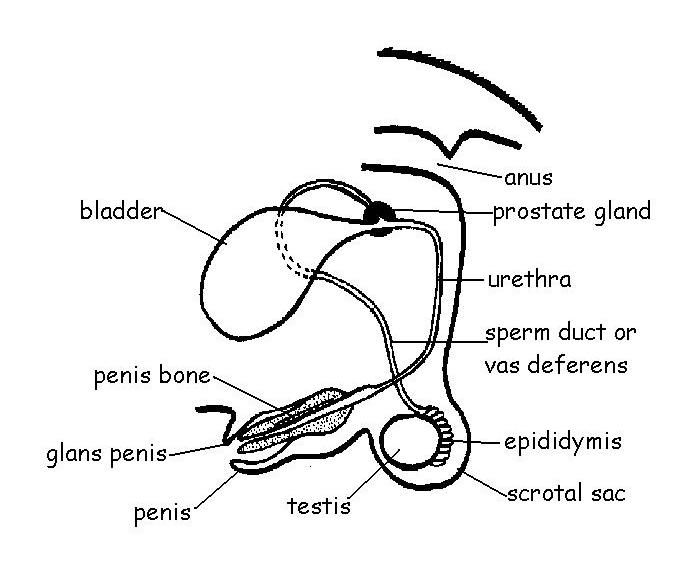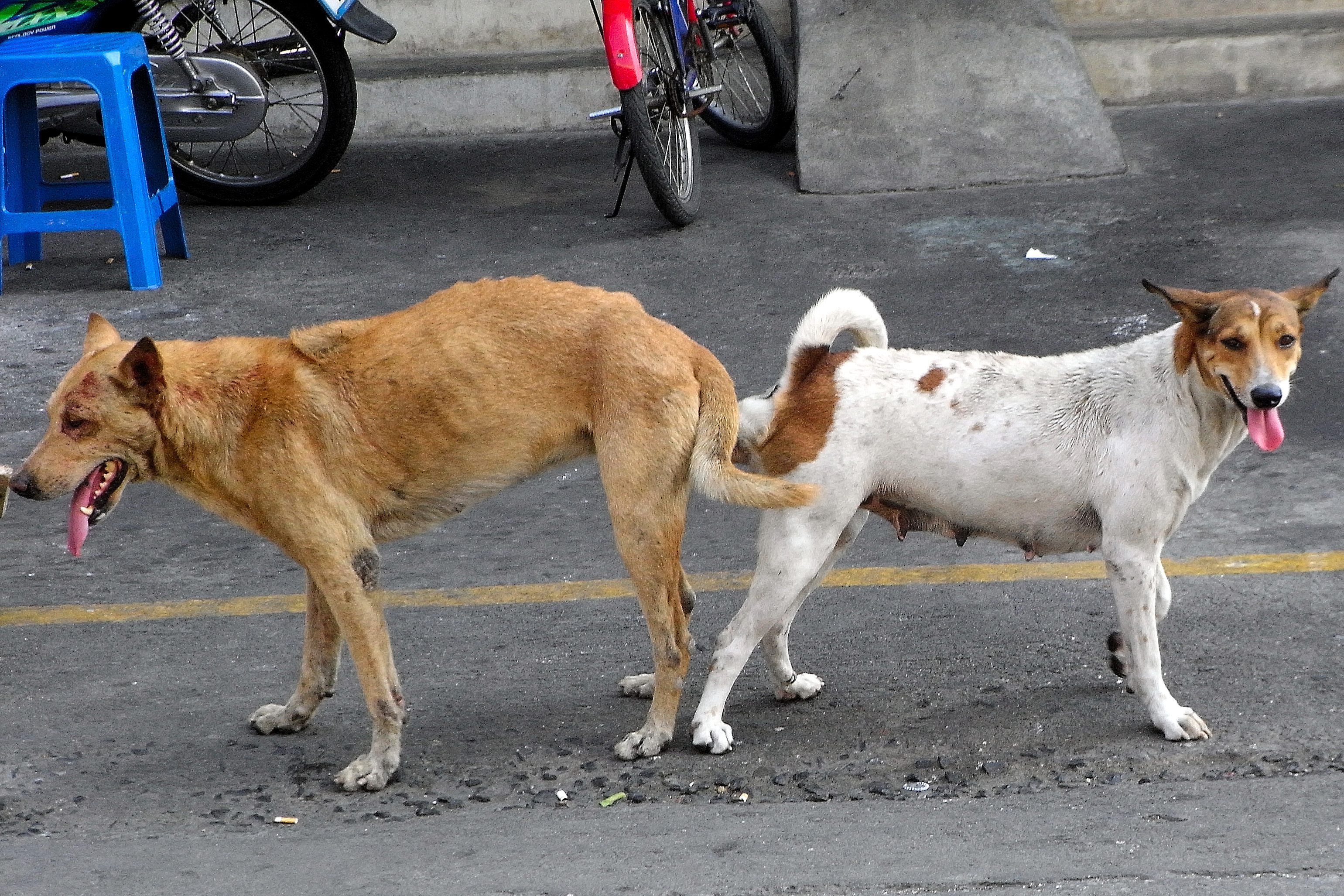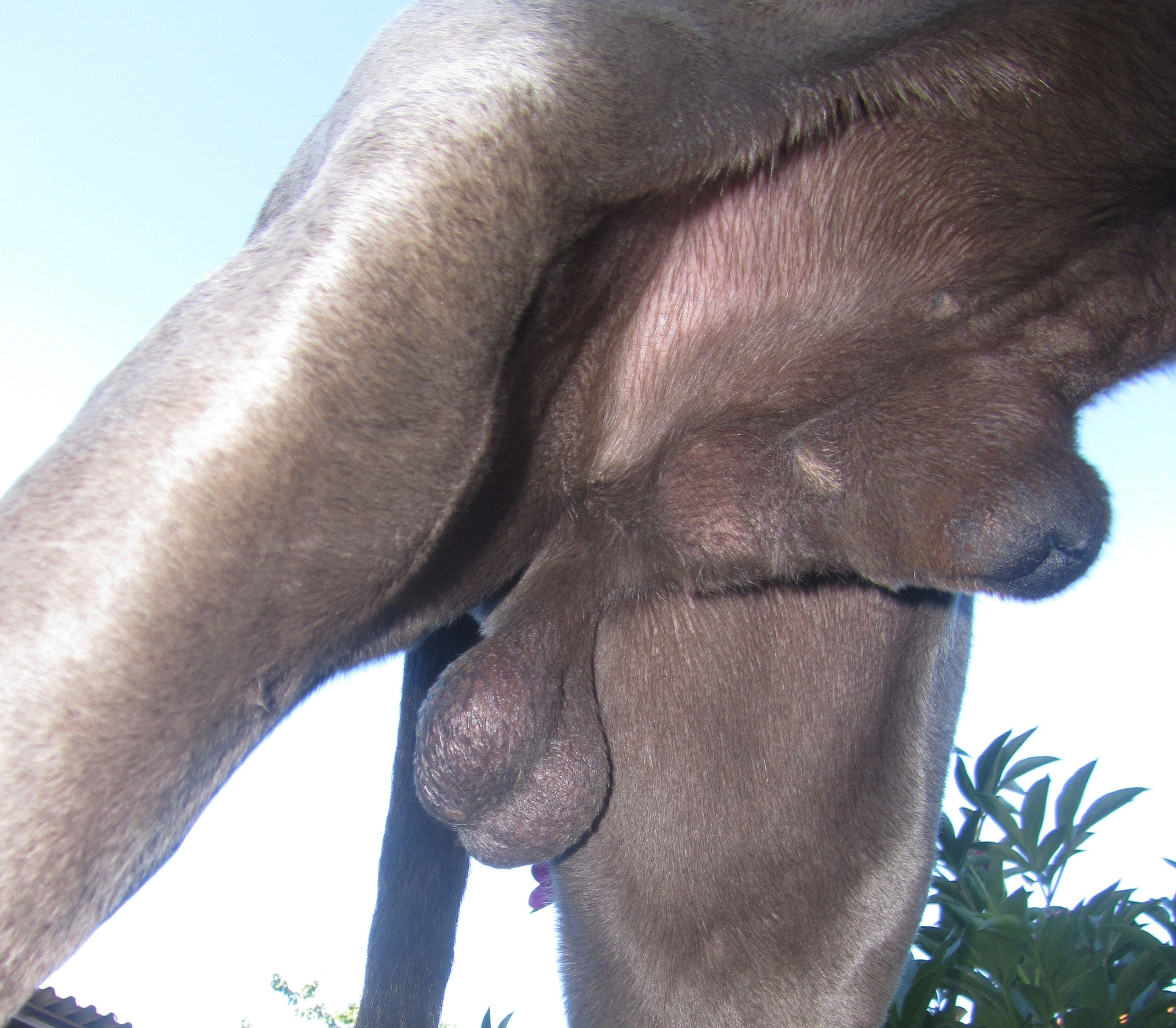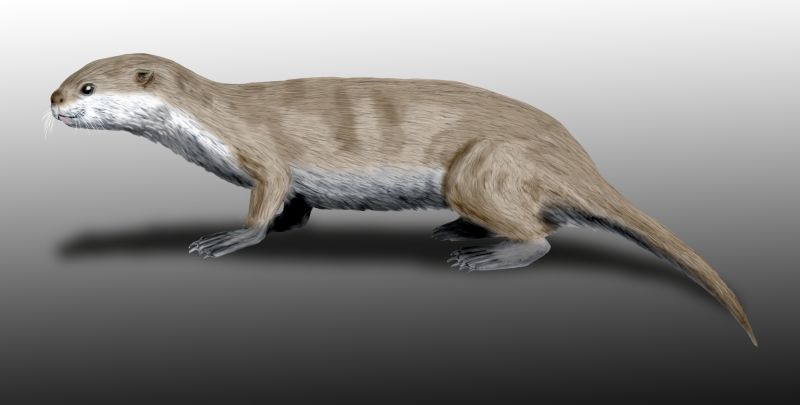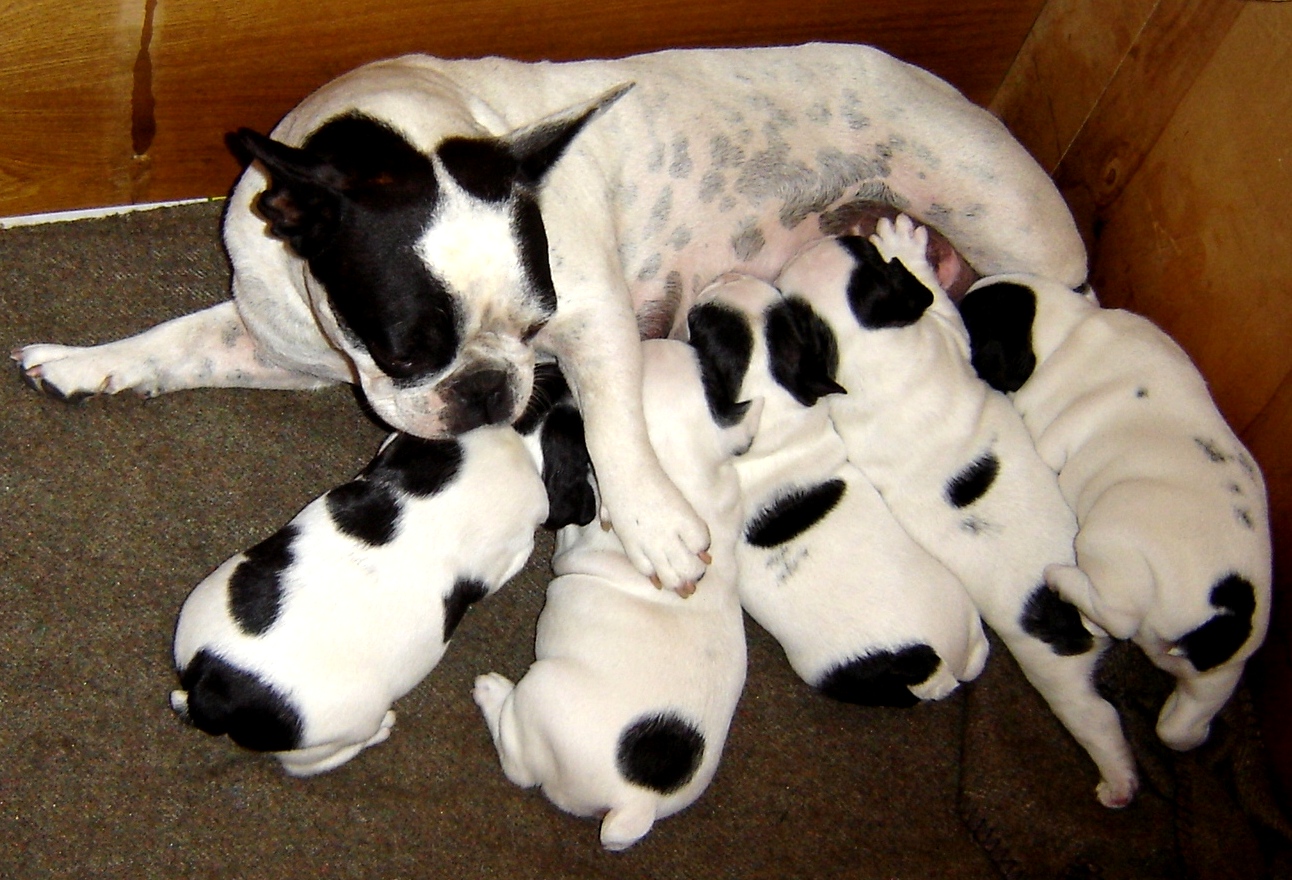|
Bulbus Glandis
The bulbus glandis (also called a bulb or knot) is an erectile tissue structure on the penis of canid mammals. During mating, immediately before ejaculation the tissues swell up to lock ('' tie'') the male's penis inside the female. The locking is completed by circular muscles just inside the female's vagina; this is called "the knot" tightening thus preventing the male from withdrawing. The circular muscles also contract intermittently, which has the effect of stimulating ejaculation of sperm, followed by prostatic fluid, as well as maintaining the swelling of the penis and therefore the tie, for some time. For domestic dogs the tie may last up to half an hour or more, though usually less. When male canines are sexually excited, the bulbus glandis may swell up inside the penile sheath, even if the dog has been neutered. The bulbus glandis also occurs in the penises of some pinnipeds, including South American fur seals. See also * Canine reproduction Canine reproduction is t ... [...More Info...] [...Related Items...] OR: [Wikipedia] [Google] [Baidu] |
Erectile Tissue
Erectile tissue is tissue in the body with numerous vascular spaces, or cavernous tissue, that may become engorged with blood. However, tissue that is devoid of or otherwise lacking erectile tissue (such as the labia minora, vestibule, vagina and urethra) may also be described as engorging with blood, often with regard to sexual arousal. In sex organs Erectile tissue exists in external genitals such as the corpora cavernosa of the penis and their homologs in the clitoris, also called the corpora cavernosa. During penile or clitoral erection, the corpora cavernosa will become engorged with arterial blood, a process called '' tumescence''.Chapter 35 in: This may result from any of various physiological stimuli which can be internal or external. This process of stimulation, due to internal or external stimuli, is also known as sexual arousal. The corpus spongiosum is a single tubular structure located just below the corpora cavernosa in males. This may also become slightly ... [...More Info...] [...Related Items...] OR: [Wikipedia] [Google] [Baidu] |
Canine Penis
Canine reproduction is the process of sexual reproduction in domestic dogs, Wolf, wolves, coyotes and other Canis, canine species. Canine sexual anatomy and development Male reproductive system Erectile tissue As with all mammals, a dog's penis is made up of three pieces of erectile tissue. These are the two ''corpus cavernosum penis, corpora cavernosa'' and the singular ''Corpus spongiosum penis, corpus spongiosum'' which continues in the Glans penis, glans. A notable difference from the human penis is that the visible part during an erection consists entirely of the glans. The Retractor muscle of the penis, retractor muscle is attached at the shaft of the penis. It is a paired smooth muscle that is used to retract the penis back into the Penile sheath, sheath. Glans A dog's Glans penis, glans consists of two sections: Behind the lower, long part (''Glans penis#Other animals, pars longa glandis'') lies the "knot" (''Bulbus glandis'') which expands only after penetrating the va ... [...More Info...] [...Related Items...] OR: [Wikipedia] [Google] [Baidu] |
Copulatory Tie
Canine reproduction is the process of sexual reproduction in domestic dogs, wolves, coyotes and other canine species. Canine sexual anatomy and development Male reproductive system Erectile tissue As with all mammals, a dog's penis is made up of three pieces of erectile tissue. These are the two '' corpora cavernosa'' and the singular '' corpus spongiosum'' which continues in the glans. A notable difference from the human penis is that the visible part during an erection consists entirely of the glans. The retractor muscle is attached at the shaft of the penis. It is a paired smooth muscle that is used to retract the penis back into the sheath. Glans A dog's glans consists of two sections: Behind the lower, long part ('' pars longa glandis'') lies the "knot" ('' Bulbus glandis'') which expands only after penetrating the vagina and causes the male dog to remain inside the bitch ("Tie") for some time after ejaculation (typically between 15 and 30 min). This increases the ... [...More Info...] [...Related Items...] OR: [Wikipedia] [Google] [Baidu] |
Penile Sheath
Almost all mammal penises have foreskins or prepuces. In non-human mammals, the prepuce is sometimes called the penile sheath or preputial sheath. In koalas, the foreskin contains naturally occurring bacteria that play an important role in fertilization. In some bat species, the prepuce contains an erectile tissue structure called the ''accessory corpus cavernosum''. During musth, a male elephant may urinate with the penis still in the sheath, which causes the urine to spray on the hind legs.Sukumar, pp. 100–08. Male dogs and wild dogs have a large and conspicuous penile sheath. In stallions, the retractor penis muscle contracts to retract the stallion's penis into the sheath and relaxes to allow the penis to extend from the sheath. The penile sheath of a male axis deer is elongated and urine-stained. When rubbing trees with their horns, these stags sometimes move the penis back and forth rapidly inside its sheath. Male bison and fallow deer Fallow deer is the co ... [...More Info...] [...Related Items...] OR: [Wikipedia] [Google] [Baidu] |
Neutering
Neutering, from the Latin ('of neither sex'), is the removal of a non-human animal's sex organ, reproductive organ, either all of it or a considerably large part. The male-specific term is castration, while spaying is usually reserved for female animals. Colloquially, both terms are often referred to as fixing. In male horses, castrating is referred to as gelding. An animal that has not been neutered is sometimes referred to as entire or intact. Often the term ''neuter[ing]'' is used to specifically mean castration, e.g. in phrases like "spay and neuter". Neutering is the most common method for animal Sterilization (medicine), sterilization. humane society, Humane societies, animal shelters, and rescue groups urge pet owners to have their pets neutered to prevent the births of unwanted Litter (zoology), litters, which contribute to the Overpopulation of domestic pets, overpopulation of unwanted animals in the rescue system. Many countries require that all adopted cats and dogs be ... [...More Info...] [...Related Items...] OR: [Wikipedia] [Google] [Baidu] |
Pinniped
Pinnipeds (pronounced ), commonly known as seals, are a widely range (biology), distributed and diverse clade of carnivorous, fin-footed, semiaquatic, mostly marine mammals. They comprise the extant taxon, extant families Odobenidae (whose only living member is the walrus), Otariidae (the eared seals: sea lions and fur seals), and Phocidae (the earless seals, or true seals), with 34 extant species and more than 50 extinct species described from fossils. While seals were historically thought to have descended from two ancestral lines, molecular phylogenetics, molecular evidence supports them as a monophyletic group (descended from one ancestor). Pinnipeds belong to the suborder Caniformia of the order Carnivora; their closest living relatives are musteloids (Mustelidae, weasels, Procyonidae, raccoons, skunks and red pandas), having diverged about 50 million years ago. Seals range in size from the and Baikal seal to the and southern elephant seal. Several species exhibit ... [...More Info...] [...Related Items...] OR: [Wikipedia] [Google] [Baidu] |
South American Fur Seal
The South American fur seal (''Arctocephalus australis'') breeds on the coasts of Peru, Chile, the Falkland Islands, Argentina, Uruguay and Brazil. The total population is around 250,000. However, population counts are sparse and outdated. Although Uruguay has long been considered to be the largest population of South American fur seals, recent census data indicates that the largest breeding population of A. a. australis (that breeds in Chile, the Falkland Islands, Argentina, Uruguay) are at the Falkland Islands (estimated pup abundance ~36,000) followed by Uruguay (pup abundance ~31,000). The population of South American fur seals in 1999 was estimated at 390,000, a drop from a 1987 estimate of 500,000 - however a paucity of population data, combined with inconsistent census methods, makes it difficult to interpret global population trends. Description South American fur seals have a dark grey or brown coat of fur. Adult males are much larger than females, with thicker necks and ... [...More Info...] [...Related Items...] OR: [Wikipedia] [Google] [Baidu] |
Canine Reproduction
Canine reproduction is the process of sexual reproduction in domestic dogs, wolves, coyotes and other canine species. Canine sexual anatomy and development Male reproductive system Erectile tissue As with all mammals, a dog's penis is made up of three pieces of erectile tissue. These are the two '' corpora cavernosa'' and the singular '' corpus spongiosum'' which continues in the glans. A notable difference from the human penis is that the visible part during an erection consists entirely of the glans. The retractor muscle is attached at the shaft of the penis. It is a paired smooth muscle that is used to retract the penis back into the sheath. Glans A dog's glans consists of two sections: Behind the lower, long part ('' pars longa glandis'') lies the "knot" ('' Bulbus glandis'') which expands only after penetrating the vagina and causes the male dog to remain inside the bitch ("Tie") for some time after ejaculation (typically between 15 and 30 min). This increases the cha ... [...More Info...] [...Related Items...] OR: [Wikipedia] [Google] [Baidu] |
Mating Plug
A mating plug, also known as a copulation plug, vaginal plug, sperm plug, or sphragis (Latin, from , "a seal"), is a gelatinous secretion used in the mating of some species. It is deposited by a male into a female genital tract, such as the vagina, and later hardens into a plug or glues the tract together. While females can expel the plugs afterwards, the male's sperm still gets a time advantage in getting to the egg, which is often the deciding factor in fertilization. The mating plug plays an important role in sperm competition and may serve as an alternative and more advantageous strategy to active mate guarding. In some species, such a passive mate-guarding strategy may reduce selection on large male size. Such a strategy may be advantageous because it would allow a male to increase reproductive success by spending more time pursuing new female mates rather than active mate guarding. Composition The mating plug of the ''Bombus terrestris'' was chemically analyzed and found ... [...More Info...] [...Related Items...] OR: [Wikipedia] [Google] [Baidu] |
Dog Anatomy
Dog anatomy comprises the anatomical study of the visible parts of the body of a dog, domestic dog. Details of structures vary tremendously from dog breed, breed to breed, more than in any other animal species, wild or domesticated, as dogs are highly variable in height and weight. The smallest known adult dog was a Yorkshire Terrier that stood only at the shoulder, in length along the head and body, and weighed only . The heaviest dog was an English Mastiff named Zorba (dog), Zorba, which weighed . The tallest known adult dog is a Great Dane that stands at the shoulder. Anatomy Muscles The following is a list of the muscles in the dog, along with their origin, insertion, action and innervation. Extrinsic muscles of the thoracic limb and related structures: Descending superficial pectoral: originates on the first sternebrae and inserts on the greater tubercle of the humerus. It both adducts the limb and also prevents the limb from being abducted during weight bearing. It i ... [...More Info...] [...Related Items...] OR: [Wikipedia] [Google] [Baidu] |
Dog Breeding
Dog breeding is the practice of mating selected dogs with the intention of maintaining or producing specific qualities and characteristics. When dogs reproduce without such human intervention, their offspring's characteristics are determined by natural selection, while "dog breeding" refers specifically to the artificial selection of dogs, in which dogs are intentionally bred by their owners. Breeding relies on the science of genetics, hence a breeder who is knowledgeable on canine genetics, health, and the intended purpose of the dogs attempts to breed suitable dogs. Terminology The female parent of puppies is referred to as the ''dam'' and the male parent is referred to as the ''sire''. A litter consists of the puppies born from the same pregnancy. A ''whelp'' is a newborn puppy and giving birth to dogs is called ''whelping''. Dogs commonly give birth in a '' whelping box'', a simple box or pen provided to the dam to help shelter and contain the puppies. A person who intent ... [...More Info...] [...Related Items...] OR: [Wikipedia] [Google] [Baidu] |

